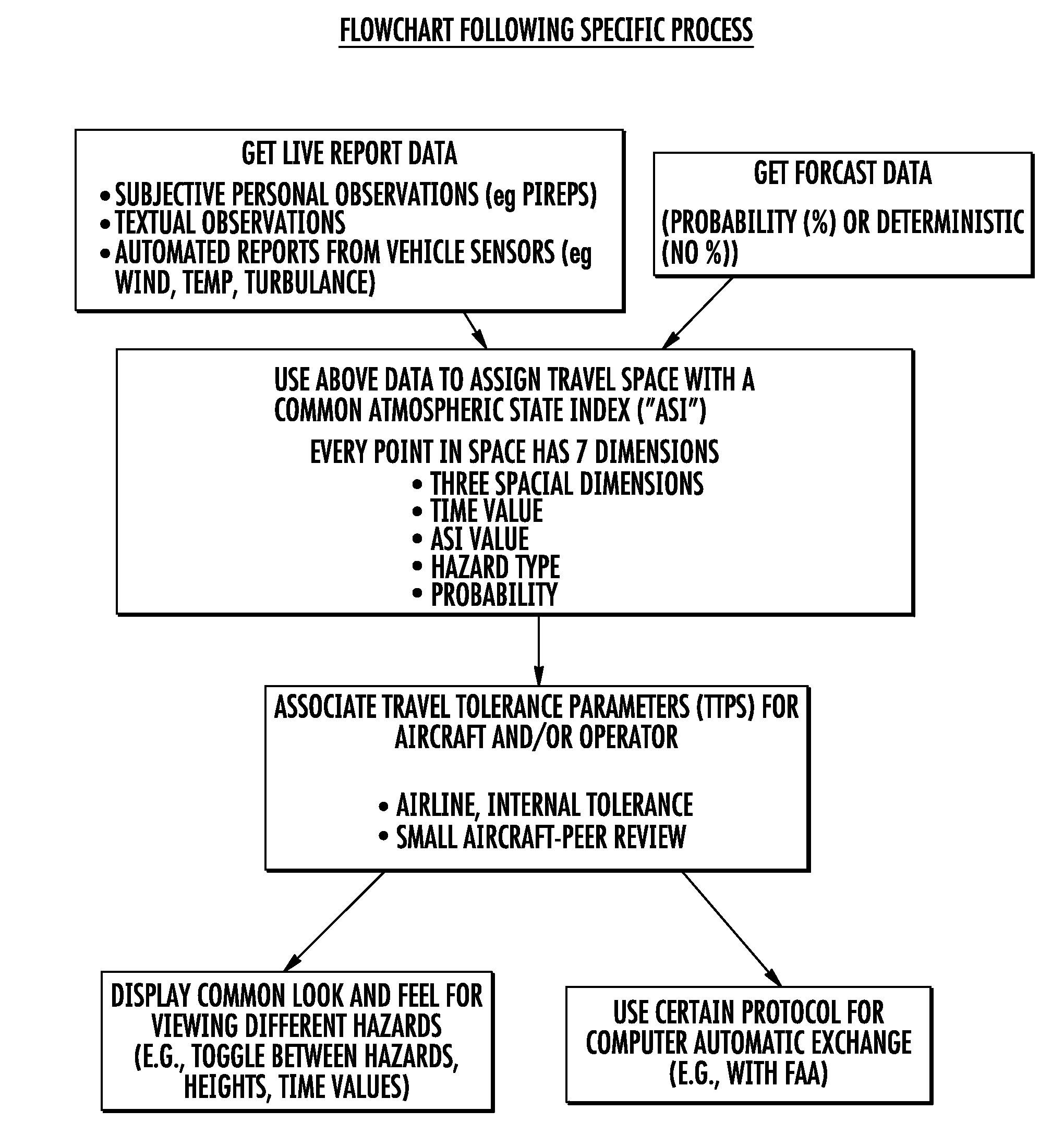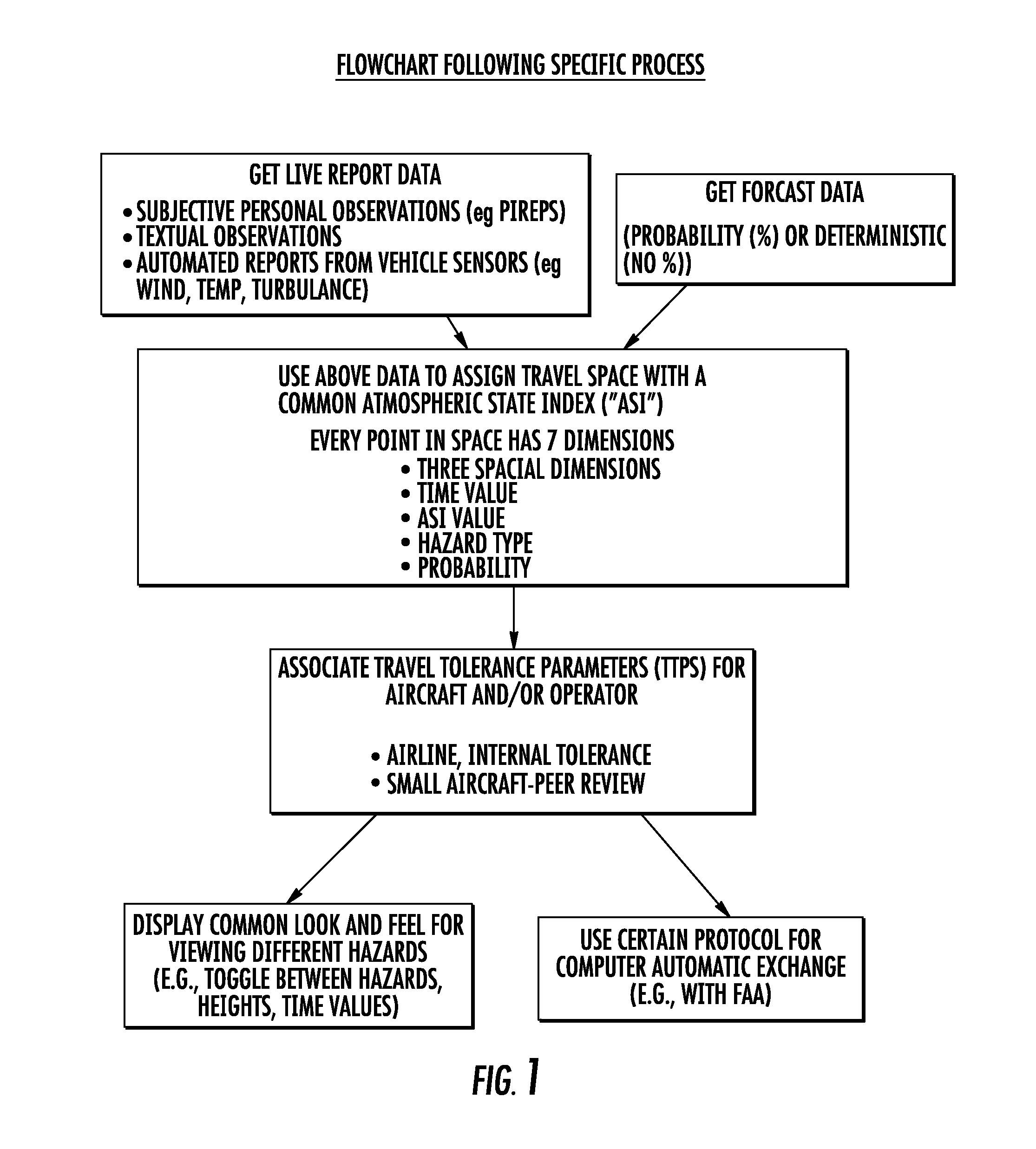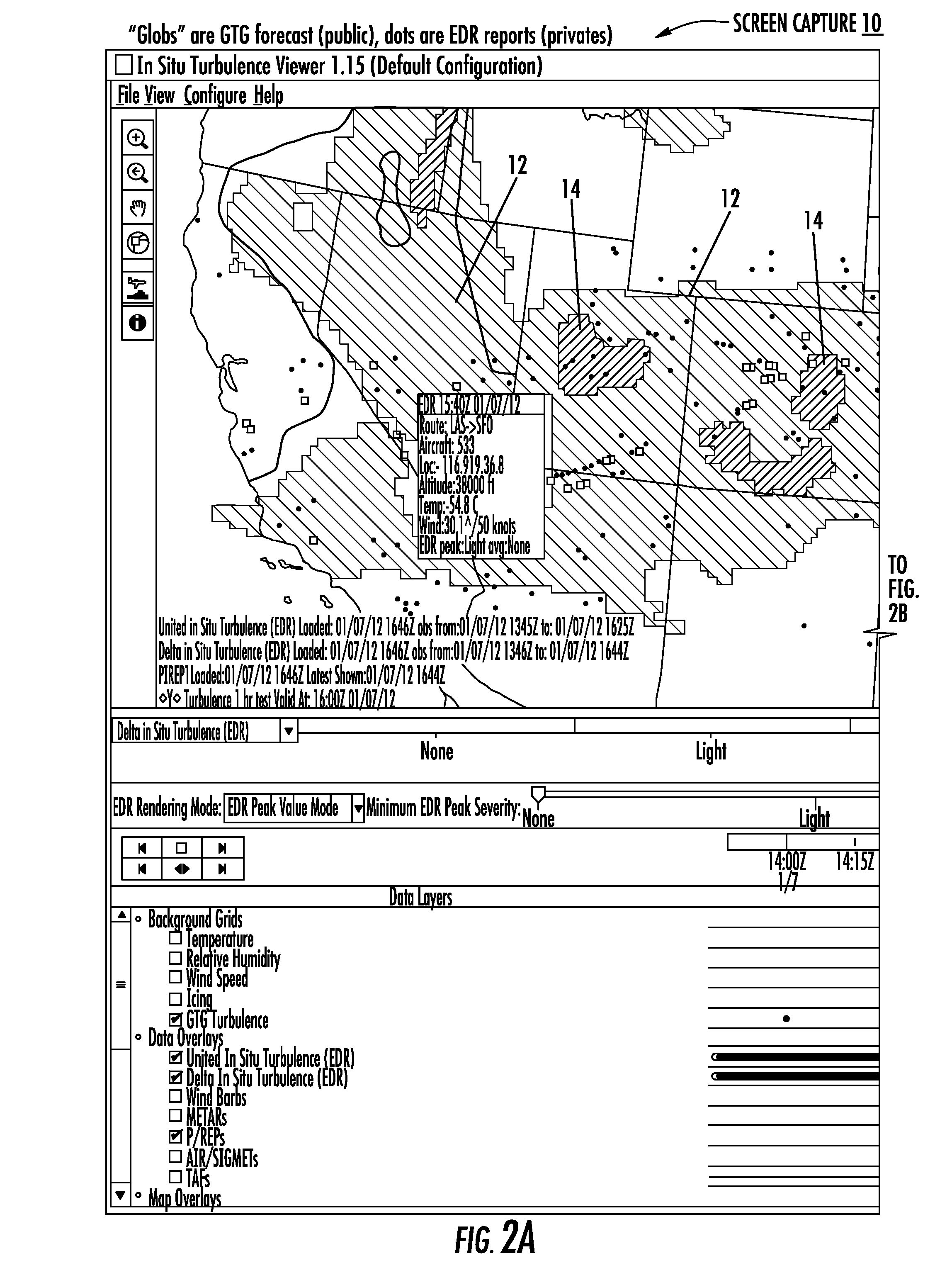Weather avoidance tool system
a tool system and weather technology, applied in the field of weather avoidance tool system, can solve problems such as confusion for users, confusion for end users, and affecting the flight of atmospheric turbulence,
- Summary
- Abstract
- Description
- Claims
- Application Information
AI Technical Summary
Benefits of technology
Problems solved by technology
Method used
Image
Examples
Embodiment Construction
[0022]According to various embodiments of the present invention, a method is provided for planning a path of air travel through a three dimensional travel region having at least two different types of travel hazards each having varying degrees of intensity. Various embodiments of the method comprise the steps of: A) accumulating data relating to each of the two different types of travel hazards, the two hazards being “Hazard 1” and “Hazard 2”; B) converting each of the sets of data (“Hazard 1 Data” and Hazard 2 Data”) to fit to a common atmospheric state intensity scale, such that Hazard 1 Data can be used to report the intensity of Hazard 1 along the common atmospheric state intensity scale, and such that Hazard 2 Data can be used to report the intensity of Hazard 2 along the intensity scale; and C) using both sets of converted data to plan a path of air travel through the three dimensional travel region.
[0023]According to various embodiments of the present invention, a method is p...
PUM
 Login to View More
Login to View More Abstract
Description
Claims
Application Information
 Login to View More
Login to View More - R&D
- Intellectual Property
- Life Sciences
- Materials
- Tech Scout
- Unparalleled Data Quality
- Higher Quality Content
- 60% Fewer Hallucinations
Browse by: Latest US Patents, China's latest patents, Technical Efficacy Thesaurus, Application Domain, Technology Topic, Popular Technical Reports.
© 2025 PatSnap. All rights reserved.Legal|Privacy policy|Modern Slavery Act Transparency Statement|Sitemap|About US| Contact US: help@patsnap.com



